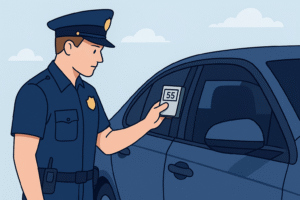Probably a harnessing experience for anyone making an entrance into a courtroom for the first time-whether as a defendant, witness, juror, or supporter-an insight into the ways of a court can ease breathing and prepare anybody for what lies ahead. Every single point-for instance, the setup of the room, the actors occupying it-is integral to the exercise of bringing a case to a just conclusion.
This guide will tell you about what you can expect inside a courtroom, what roles people play, rules in courtroom norms, and how things typically pan out for proceeding. Hopefully, everything you prepare will make you more self-assured and able when time comes for your own entry.
What Happens Inside a Courtroom?
A courtroom is inherently grave, organized, and infused with legal processes. In hearings, trials, and arraignments presided over by a judge, all proceedings are meticulously controlled. Normally, a courtroom layout includes a judicial podium, witness stand, prosecution table and defense table, jury box when applicable, and a gallery for spectators.
There, being in session or during hearing, the judges have what is called a period schedule in which one party presents evidence, when witnesses testify under oath, and objections are lifted occasionally. All the processes carried out formally justify that no one party will carry his case better than the other before a decision is made. The intention is to keep the process orderly and fair regarding any legal proceedings.
Courtroom Rules Everyone Should Follow
There are some rules in courtroom that must comply with certain rules in a courtroom environment. These rules are not only traditions but commonsensically applied to protect the integrity of the court in the process. Plus, it is obligatory to respect everyone from the judge to the attorneys and courthouse personnel.
Courtroom protocol includes dressing appropriately, switching off cell phones, not interrupting, and standing as the litigants talk to the judge. Also, either any gestures or facial expressions, which can be interpreted by the jury. Violation of any of the courtroom rules may result in being removed, or in a bold case one may be charged with contempt, so know what to avoid and do.
The Role of a Defendant in Court
The courtroom defendant assumes an important role in any criminal or civil case. The person alleged to have committed some wrongdoing, the defendant’s behavior and presentation within the courtroom can greatly sway whether the case ends in conviction or acquittal. The defendant is presumed innocent until proven guilty in a criminal case and can exercise his right to remain silent or testify or put forth evidence in his defense.
The defendant gives their side to the allegations against them by the plaintiff in a civil case. Great tactical decisions on behalf of the defense against the charges work with counsel, presenting and bringing forth evidence in support of the defense, and either settling the case or trying it completely. In this regard, deferring to the rules of civil procedure and giving due respect to court proceedings constitutes the bare minimum of expectations imposed in a case by whatever kind on a defendant.
Going to Court: Step-by-Step Overview
If one is going to court, one must know the process and events to transpire. Pre-planning starts the day assigned, in which paperwork gets checked, traveling plans are made, and early arrival is arranged for. Each case is different, but knowing these general steps can help reduce uncertainty and stress. Here is a stripped-down version of what usually happens in court:
- Come first and check into the court staff.
- Sit quietly in the courtroom until the time your name is called.
- Present your case and can be questioned.
- The judge may pass the decision or schedule the hearing.
- Based on case outcomes, you may receive a fine, orders, or a return.
One case is entirely different, but these are general steps to take which may reduce the concern and the tension.
Who’s Who in the Courtroom?
The courtroom is made up of several key people working together to ensure a legal process is being done. Knowing who they are and what they do can help understand better the happenings around.
The judge holds the hearing and makes sure that courtroom regulations are strictly followed. The court clerk will manage paper records and filing, and a bailiff will take care of security and order. Both the prosecution and defense would be represented by their respective lawyers in this matter. An appointed jury will finally determine what the final judgment would be after evaluating the evidence presented before it. Last, all that is said in court will be recorded and producible as an official record by the court reporter.
What Happens at a Court Hearing?
Court Hearings are Structured for formal courtroom assembly, in which a judge listens to two sides argue their cases and evaluates the evidence before deciding on fact and opinion. Hearings can be conducted briefly as in the case of arraignments or status updates, or more in-depth as with motion hearings and preliminary trials. Knowledge of what happens at a court hearing equips one for the court.
Both the sides can give gloomy statements, or witness statements, or documentations stating that show the thing they claim. In certain rationalizations, the legal representatives will instruct the movement to dismiss, appeal continuance, or face the admissibility of evidences. Judges can put some clarifying questions on both sides, which should be answered honestly and with some courtesy. The hearings are generally informal in comparison with trials but are not less significant, and results can determine the course or the finish of the whole case.
During a hearing, the presiding judge will direct questions to those present, asking the necessary questions of witness(es), and considering documents submitted by both parties. The hearings are rarely public, but some hearings may be closed if the circumstances warrant it, for instance in sensitive matters. It is key that you arrive prepared, respectful, and able to speak clearly and truthfully when required.
Possible Consequences of a Court Appearance
There can be many possible outcomes for court appearances depending on the type of the case and the role you play. If you are the courtroom defendant in a criminal case, the judge may impose a fine, grant probation, or even send you to jail. While in a civil case, you may get an order to pay damages or perform your contractual obligations.
Thus, judgment will have its consequences-wide and far-reaching consequences. Public records of a court appearance are interrogated alongside possible employment opportunities and other legal engagements in the future. That is why every court date must be taken seriously and legal counsel should be sought if possible.
Tips for Staying Calm and Prepared in Court
Going to court is a painful experience, which can change with preparation and the right mind frame. Learn as much as you can about your case and what is expected from you. Discuss this and practice beforehand with your lawyer, so that your answers will come out clearly and respectfully. Some other tips for staying calm include:
- Dress appropriately in business attire as a mark of respect.
- Come early so as not to feel rushed.
- Stay quiet and listen carefully to all instructions.
- Switch off your phone, and don’t interrupt the hearing.
- Bring all documents and identification needed with you.
Doing all this will help you create a good impression with the judge and everyone else inside the courtroom, maintaining one’s dignity.





